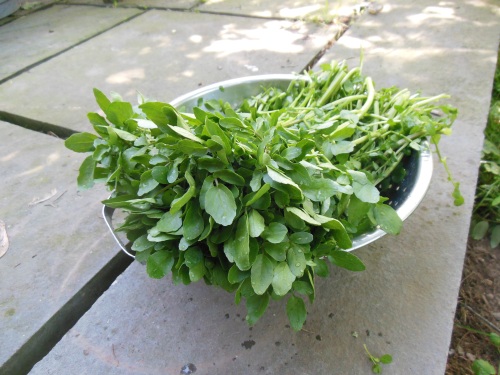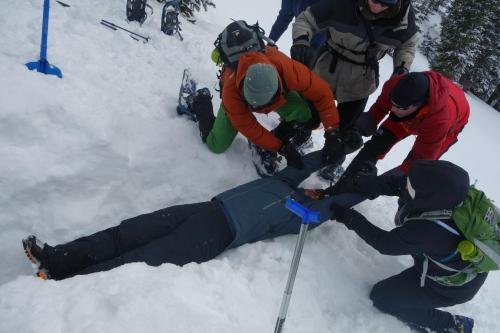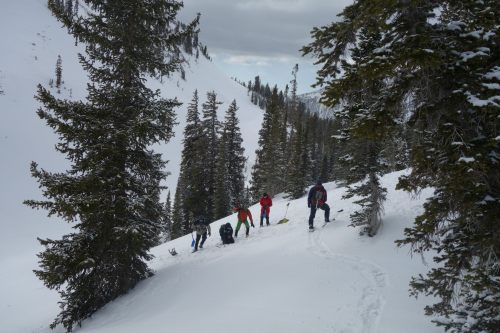The tagline for this blog has always been “Ramblings of an evolutionary-minded future-physician.” I started this blog thinking that most of these “ramblings” would be verbal, but for the next few months these ramblings are going to get a bit more “real”.
In the next few months I plan to write more about my physical ramblings (though I do hope to squeeze in some “academic” posts as well), as I will be traveling rather extensively. Having finished my medical training in November, and my trek along the residency interview trail (a rambling story for another post), I am now using my “free time” between graduation and the start of my intern year (which kicks off at the end of June) to travel as much as possible.
The first stop on my itinerary was Belize. I visited Belize with my Mum about 8 years ago during Spring Break of my first year of medical school. On that trip I rode horses through the jungles and mountains, and then headed to Caye Caulker where I relaxed on the beach, did some diving, and studied physiology (Or at least I tried to study a bit… my school had cruelly scheduled an exam for the Monday after our return from break!).
I returned to Belize this time at the invitation of friends who moved there about a year ago. (Let this be a warning- if you invite me to come visit, I’ll probably try and take you up on it! I much prefer travelling to places where I know people so I can get an insiders perspective instead of a tourist experience.) Keen to escape the New Jersey Winter, and keen to experience life in a small Belizean village near the border of Guatemala, I boarded a plane to Belize City two weeks ago and only just returned (after an unexpected overnight stay in Houston thanks to the most recent winter storm to hit the North East).
I won’t bore you with all the details of my travel, but I will share some photos, observations, and experiences… I hope you enjoy!!
Belize is about the size of my home state of NJ (though with less than 5% of the population). I spent most of my time in the west- near the one (legal) border crossing to Guatemala. I was fortunate to have some beautiful days (it’s been a very rainy past few months), and I was able to capture some beautiful views.
I also headed to Placencia (on the coast) for a few days. The Caribbean was beautiful, as was the weather, and I enjoyed time in the water as well as some time stand-up paddling.
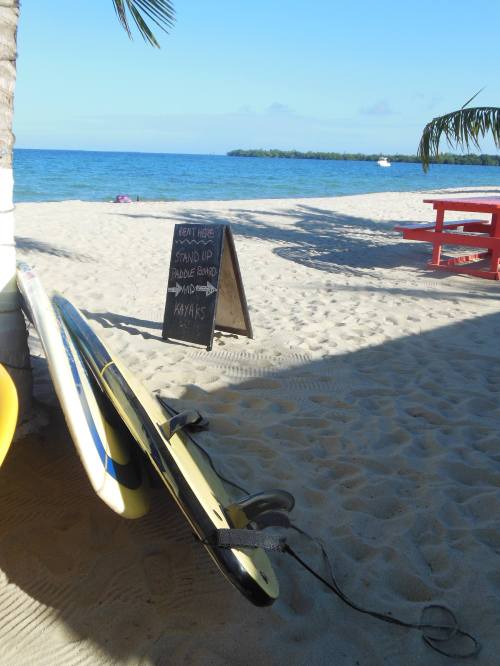
A great place to go for a paddle. I enjoyed paddling in the open waters, and cruising along next to the mangroves, the roots of which were teeming with small fish.
When inland, I spent quite a bit of time in the “twin cities” of San Ignacio and Santa Elena. I was very fortunate to join my friends on a photo shoot of the twin cities for NICH– the National Institute of Culture and History. We travelled around the city taking pictures of historic sights and getting an amazing history lesson from Hector Silva- a retired politician with an encyclopedic knowledge of Belize. He is the last living pre-Independence minister (Belize attained independence from the Crown in 1981), and has an impressive political history. He was first elected to local office at the age of 23 in 1957 (or maybe it was ’58- I’ll admit I didn’t take notes while I was talking to him and was surprised to find that this Belizian legend didn’t have a wikipedia page!), was appointed to the first Belizian cabinet, and has been very involved in Belizian politics up to the present day (though he is retired). He is a fount of knowledge, and obviously well loved by Belizian people. It was impressive to see the immense respect for him from passers by as we walked around the streets of the twin cities. “Don” Hector Silva is incredibly passionate about Belize, and about life. Even in his 80s he had more excitement and enthusiasm for life than many people a quarter of his age. I was incredibly fortunate to not only meet him him, but also to get a tour of the twin cities from him.

NICH has collected a number of historic pictures of the twin cities, which Hector Silva took us through. At one point he showed us a picture of the reservoir and said how he had travelled to London to petition for money for its construction. Prior to its construction people got all their water from the river that separates the twin cities- the Mopan River.
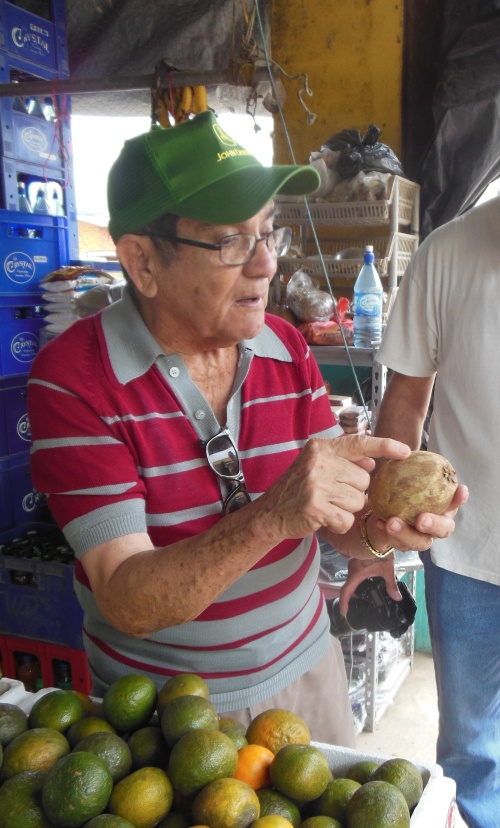
One of our stops on our photo tour of the twin cities was the market place, where Don Hector identified a number of new fruits for me. Here he is singing the praises of the Sapodilla- the fruit from the tree that produces chicle (the traditional starting ingredient for gum). Belize used to export large amounts of chicle when it was still used in chewing gum. Don Hector likes to joke that Belize is actually a part-owner of Wrigley Field in Chicago.
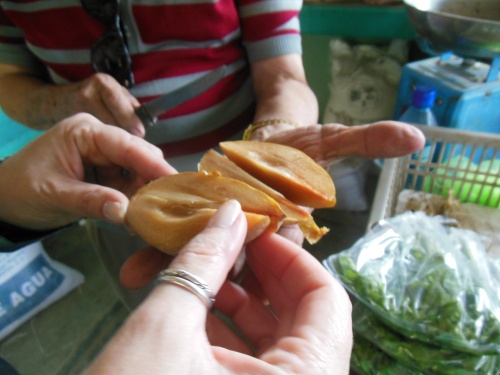
Hector insisted we try a Sapodilla, and it really was delicious (I had another 3 during my stay). It is very sweet, with a texture much like a very ripe pear.

This is the Hawkesworth bridge, or “High Bridge”, that you cross to go from San Ignacio to Santa Elena. On the return trip you take the “low” bridge. In my pic you just see the one small motorcycle crossing the bridge, but I watched 18-wheelers make the crossing as well! Prior to the construction of bridges and roads connecting the twin cities to Belize city there was a fair amount of river traffic for transportation of goods.
As an enthusiast of local and traditional foods, I’m a fan of exploring markets when I travel (I wrote about markets in Sharjah when I visited the Middle East last year). The markets in Belize are full of fantastic fresh fruit and veg. I first visited the San Ignacio market on Thursday with NICH, when there were a number of fruit stalls open. On Saturday, Market Day, the market is chock-o-block with stalls selling produce, clothes, herbal remedies, jewelry, and just about anything you can imagine.
I was particularly drawn to the produce stalls…
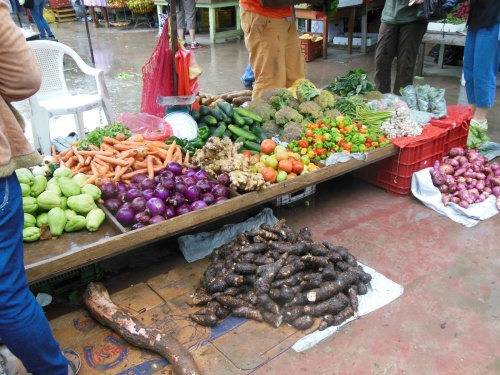
And yet MORE produce… Interestingly, there is a large Mennonite community in Belize, where they are very involved in agricultural pursuits.

No table in Belize is complete without at least 1 bottle of hot sauce, and hot peppers are a staple of the diet (Habaneros in particular). The love of spice in this part of the world definitely makes me want to learn more about Darwinian gastronomy.
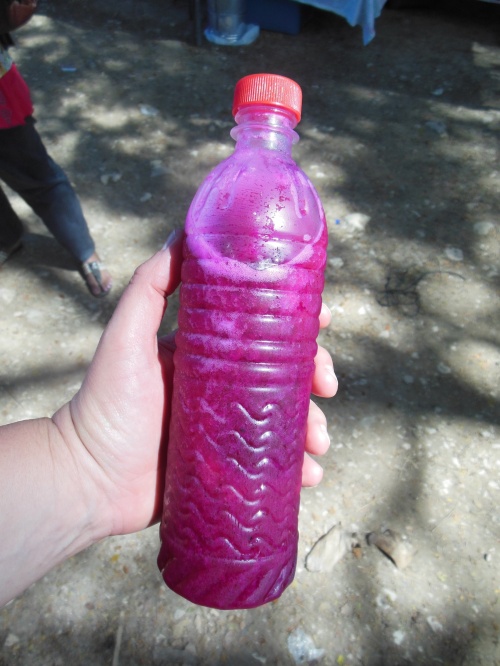
Pitaya Juice- Pitaya (AKA Dragon Fruit) Juice, purchased in the San Ignacio market. It was delicious!
I probably went overboard purchasing produce, but it was so fresh and appetizing that I couldn’t contain my enthusiasm. Also, food in the market is INCREDIBLY cheap (10 bananas for a dollar, 3lbs of cucumbers for a dollar, a beautiful head of lettuce for $2, 8 oranges or 4 grapefruit for a dollar… and these are prices in Belizian dollars! The exchange is $2Bz=$1US- yes, you could get 6lbs of cucumbers or 20 bananas for $1!)

My haul- I finally got to try “Apple Bananas”, which I wrote about a year ago, as well as culantro- a herb that tastes like cilantro but looks very different (it is in the bottom left). Also featured: lettuce, scallions, dill, zucchini, jalapenos, sorrel, star fruit, custard apple, bread fruit, sapodillas, melon, papaya, jicama, beets, carrots, and a pile of citrus! (the pile of green and orange fruits are actually Jamaican limes, while the green fruit in the bottom right corner is a ripe orange!).
The beauty of staying with friends is that I had access to their kitchen, so I was able to try out some new dishes with my purchases.

I combined jicama with scallions, culantro, jalapeno, and lime juice (yes- that orange thing is a lime) to make a really tasty jicama salad.

I’ve only had papaya a few times before, and I generally find them to be very “hit or miss”. This one was certainly a “hit” with me, and I devoured it with a few good squeezes of Jamaican lime juice.

One of the cool things I did on vacation was help my friend make coconut milk. With the help of a machete, a scary looking coconut grinder, some brute force, and a food processor, you too can make coconut milk!
Speaking of coconut… I of course had to check out the selection of cooking fats in a local store. Lard and coconut oil are both produced locally, but are sadly being pushed out by shortening (made from all kinds of things, including animal fats, palm oil, and hydrogenated vegetable oils) and vegetable oils.
Food in restaurants in Belize was generally very good and VERY cheap. Rice and beans are a popular dish, and while I don’t usually eat them at home, I did partake in Belize. The rice is frequently cooked with coconut.

Chimole- a traditional Belizian dish. It is made black by a spice paste that includes charred chilis.
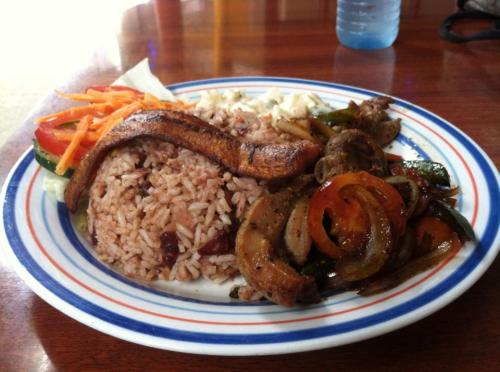
This is stewed Gibnut, an animal also known as “the Royal Rat” (because this is what was served to Queen Elizabeth when she visited Belize- incidentally, she hasn’t returned since). It was very tasty (and quite fatty). Meats (chicken, beef, or pork) are frequently served stewed with rice and beans (and as with this dish, some plantain).
After partaking in quite a bit of street food (the tacos, at 3 for $1bz in the market are a bargain), returning to the US and seeing the plastic wrapped apples in the airport lounge was rather amusing. There are very few regulations in Belize, and people often cook food in their home and then walk around the streets selling it- I saw this with everything from BBQ chicken dinners to coconut candy.
I have a lot more to share, but this seems like a good place to sign off for now… Thank you Damon and Bonnie for being wonderful hosts!! I will try and get more up tomorrow!




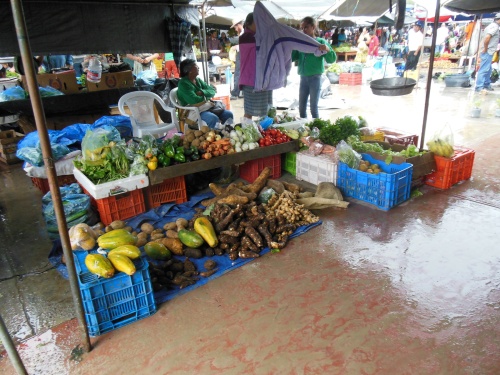




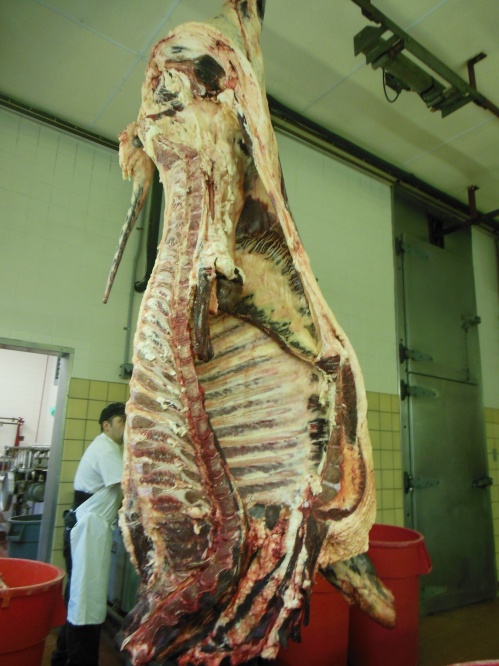
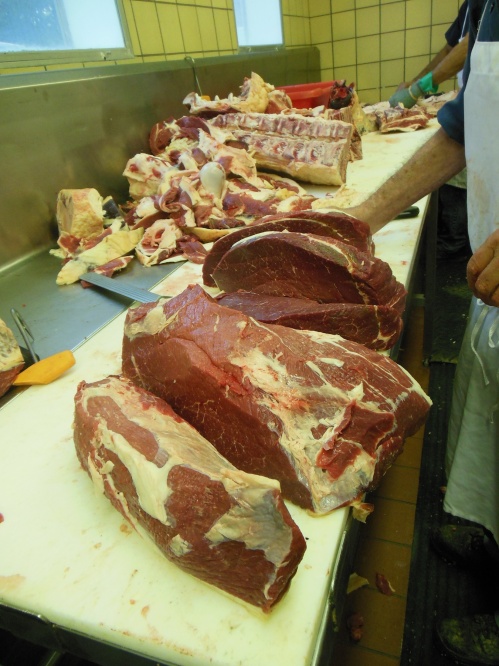




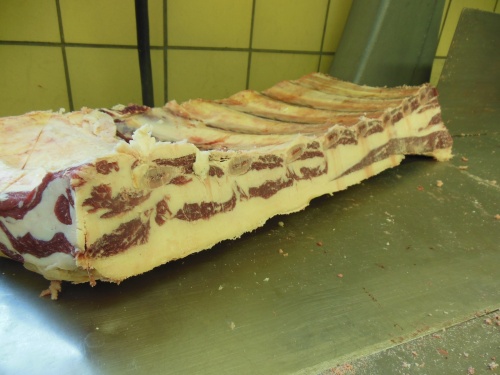


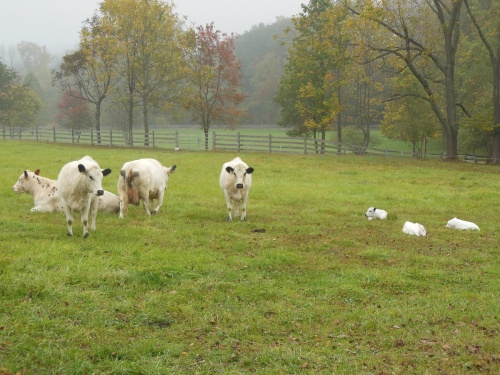



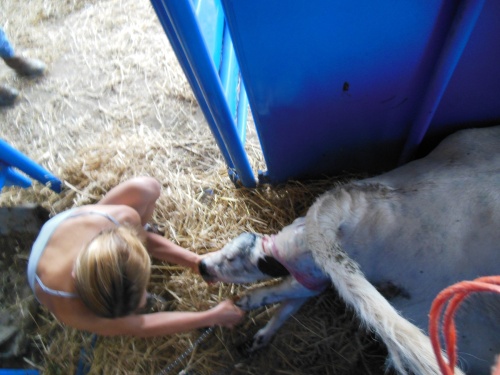
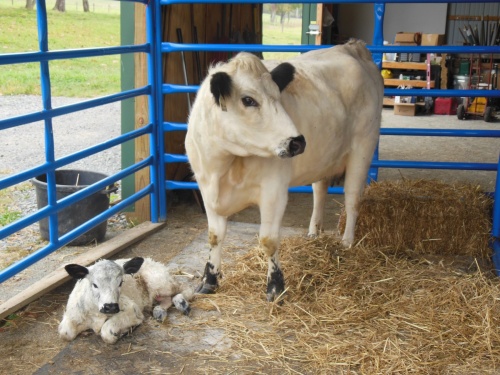




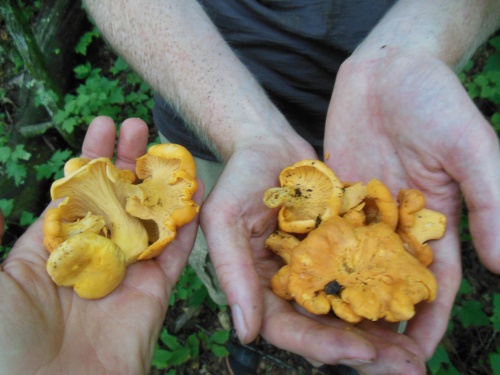
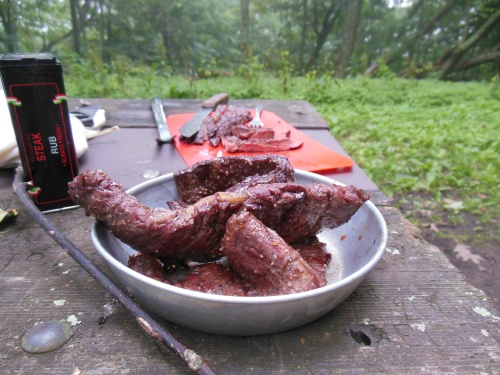

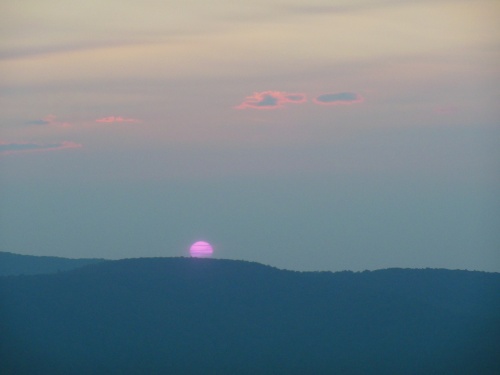











![For a bit of comparison you can see the wild blueberries (or are they bilberries? [ http://en.wikipedia.org/wiki/Vaccinium_myrtillus#Confusion_between_bilberries_and_American_blueberries]) next to some that I picked in my parents’ garden (this years crop are particularly large)](https://principleintopractice.files.wordpress.com/2013/07/njblues.jpg?w=500&h=352)

